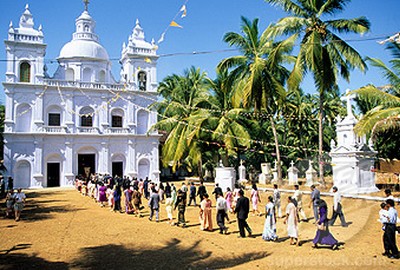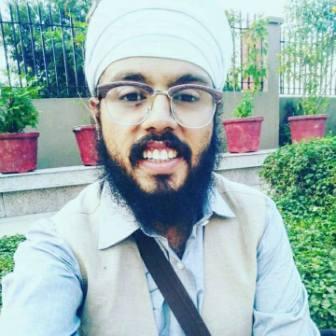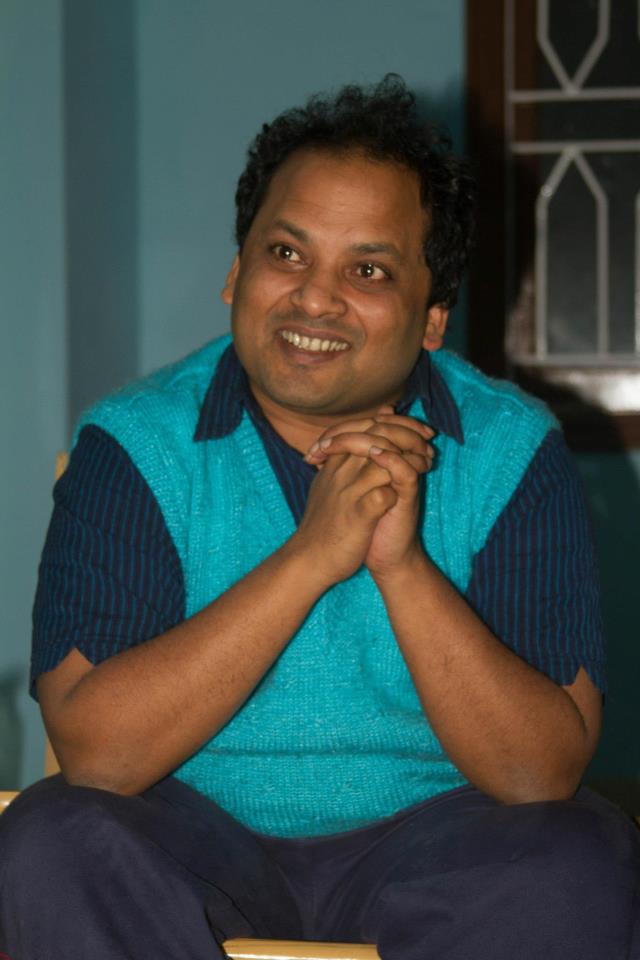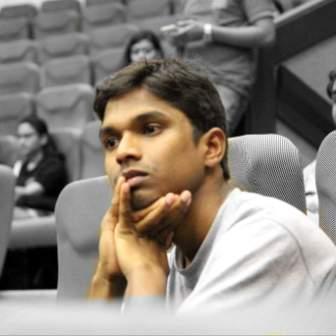Jason Keith Fernandes
Bosco de Sousa Eremita’s article, “The Silent Ethnic Cleansing of Catholics in Goa,” published earlier this month was widely shared on social media. At about the same time that I read a Hindu friend informed me that he is often accosted thus when he extends professional services to Catholics in Goa: “Arrey! Why did you take their project? Don’t you know that they are Catholics?” This revelation deepened a concern that I have had for a while owing to a variety of factors. One isthe disturbing rumour that I have been hearing for some time that the upper echelons of the ruling BJP mock Catholics as dukorkhaire (pig eaters). Another is when one notices that both alcohol and meat, which are standard at any Christian gathering, are proscribed at government venues for being against “Indian” values—unless, of course, the government chooses to make an exception for its VIPs. Or there is the more disturbing case where, for the same offence, the Christian politician Churchill Alemao was jailed, while the Hindu Brahmin Digambar Kamat was not. As a result, Eremita’s article assured me that I was not alone in perceiving that the hitherto subtle marginalisation of the community has now become blatant.

It takes great strength to call out the injustices of our times, especially at the current moment in India. For this reason, I congratulate Eremita for his courageous denouncement of the politics unfolding in Goa. However, while we must draw attention to the injustices that are being perpetrated both in Goa and in other parts of the country, it is also important that we carefully analyse and phrase our allegations. Eremita articulates the unspeakable when he alleges that there have been moves to isolate or marginalise Catholics in Goa, he goes on to suggest that this marginalisation amounts to a bloodless genocide. This is where care is needed. Genocide has a very precise meaning in international law, and the careless use of the word will only result in the dismissal of many of the valid claims that Eremita makes, either now or in the future. Exaggeration may make for good rhetoric, but it does not lend itself to pragmatic politics. Besides, one need not be on the verge of physical annihilation to merit attention. The failure of the state to extend equal treatment to its purported citizens is a big enough crime.
More importantly, we must recognise that although Christians are being wilfully marginalised, this marginalisation is not experienced equally. Rather, dominant-caste Catholics in Goa employ a variety of strategies to ensure that they can ride the crest of Hindu nationalism and survive the onslaught a little longer. For example, dominant-caste Catholics often articulate their (dubious) caste histories to ensure that they merge into the (Hindutva) background. Consequently, the attention is directed at the marginalised caste groups. Effectively, therefore, the dominant-caste Catholics join the forces of persecution against the marginalised Catholic castes. Thus, while confronting the persecution that Catholics in Goa, and Christians in India, are facing, we cannot ignore the inequalities that mark the experiences of Christians in Goa and in India. To articulate a persecution narrative without acknowledging that dominant-caste Catholics persecute marginalised Catholics both within and outside of Hindutva would be both dishonest and a profoundly erroneous appreciation of the problem.
The recognition of this difference across castes is most useful for interrogating Eremita’s lionisation of Jack Sequeira, leader of the United Goans Party, the opposition in post-colonial Goa, and Eremita’s concomitant problematizing of Dayanand Bandodkar, the first chief minister of the territory. Bandodkar led a post-colonial charge against the feudal rule of the landlords who controlled Portuguese Goa. This has made him the bête noire of the landed castes in Goa.Like Eremita, others charge that the land reforms spearheaded by Bandodkar were not uniformly implemented and disproportionately targeted Catholic landlords. They argue that this ensured that while Catholic landlords were laid low, the same was not necessarily true of the Hindu feudal lords. However, there has not been any rigorous work that would allow us to validate that claim. Further, it should be underlined that not every Catholic in Goa belonged to the landowning castes. Indeed, the vast majority of Catholics were tenants, and some of them, if one relies on hearsay, voted for Bandodkar’s Maharashtrawadi Gomantak Party (MGP) and its project of tenant liberation.Thus, Eremita would have us sympathise with the fall of the landed Catholic families. But on what basis can one generate this sympathy? The leadership offered by the Catholic landed castes has been woeful. These groups have largely colluded with the Hindu upper castes to ensure that the Catholic labouring masses have consistently been used as cannon fodder to buttress the collapsing fortunes of Goa’s landed castes, to which Jack Sequeira belonged.
For about a decade, there has been an attempt to present Jack Sequeira as the Father of the Opinion Poll. The Opinion Poll of 1967 was held to inquire from the Goan population whether they would like to be merged with Maharashtra—a demand of the MGP—or have Goa maintained as an administratively distinct unit. The anti-merger forces led by Sequeira won the vote, which may have ensured a longer lease of life for Goa’s now embattled Catholics; however, Sequeira also presided over a coalition representing the interests of the landed castes that was ideologically opposed to Bandodkar for his commitment to Hindu bahujan liberation. Further, though the MGP used Hindu nationalist imagery to fuel their cause, they were not alone, as Congress leaders, like Y. B. Chavan, also partook in this imagery. In fact, the MGP’s demand for merger was motivated by animus toward the landlord castes, especially the Saraswat caste that had benefitted substantially from Portuguese rule. It is possible that he had little choice, but the fact is that Sequeira allied with the Saraswat caste, keen to protect its own interests. Thus, if Bandodkar can be vilified for not mounting a sharp critique of the Hindu nationalist rhetoric that accompanied his regime, Jack Sequeira did no less. By association with leaders from the Saraswat caste Sequeira cemented an alliance that would in later times push Hindu nationalism in the guise of the Konkani language movement. Moreover, by virtue of being associated with the Sequeira-led coalition, marginalised Catholics gained the ire of bahujan Hindus.
Besides fighting the merger proposal, the Sequeira-led coalition was responsible for ensuring that Konkani was presented as integral to a Goan identity. The Catholic labouring castes identified with this proposition and were led to believe that it was their version of Konkani that was marked for preservation. However, as the events of the 1980s would demonstrate, it was not the Konkani embodied by Catholic cultures in Goathat would receive official recognition but that of the Hindu Saraswat caste. The largely dominant-caste Catholic leadership of the time was fully aware of this duplicity and yielded on the grounds that the Catholics should merge with the national mainstream.
In later years, as Eremita correctly points out, the identification of authentic Konkani with the Saraswat dialect ensured that the Roman script for the Konkani language, and the dialects associated with this script, have been deprived of state support with a view to their eventual destruction. What Eremita fails to point out, however, is that for almost a decade, this destruction has been challenged by a group largely composed of Catholics from marginalised caste backgrounds. Working in association with other bahujan groups, they have demanded the recognition of Konkani in the Roman script. Unfortunately, these demands have been resolutely opposed not only by the official Konkani establishment but also by sections of the Catholic upper castes, and especially Catholic priests taking pride in their Brahmin ancestry. What is horrifying is that the largely Brahmin upper echelons of the Catholic Church’s hierarchy in Goa have been complicit in encouraging these priests.
One could add any number of examples to this narrative of the contribution of upper-caste Catholics to the undermining of marginalised Catholic groups. I would like to draw particular attention to the manner in which Catholic politicians who are not from the upper layers of the dominant caste groups are systematically disparaged. It could be argued that it is this kind of dismissal that ensures that Alemao is jailed while Kamat remains at liberty. All in all, the Catholic elites in Goa have played a role discerned in other parts of India, where clinging to their upper caste status has allowed them to operate as second-rung elites dancing to the tune of upper-caste Hindus.
Under these circumstances, to talk of an equal experience of Hindu nationalist persecution would be a mistake. Eremita’s valid concern is compromised by the fact that it emerges solely from the perspective of the landed and dominant Catholic castes. Indeed, the demand for special status that he supports has thus far been limited largely to ensuring that land in Goa can only be owned by Goans—an entirely landed perspective of special status! It could be argued that the string of assertions about protecting Goa’s cultural identity, while powered by the Catholic labouring masses, has invariably ensured greater autonomy for the upper-caste landed groups. It isimperative, therefore, that we are also open to the version of the marginalised Catholic castes. One suspects that this is where Hindu nationalist oppression is felt the most. It is at this level that the blocking of access to social mobility has the most impact. And this is possibly the reason for the exodus of young Catholics from Goa.
At the start of this response to Eremita, I suggested that to articulate a persecution narrative without acknowledging that dominant-caste Catholics persecute marginalised Catholics both within and outside of Hindutva would be both dishonest and a profoundly erroneous appreciation of the problem. Thus, while there is no doubt that a silent ostracising of Catholics has occurred since Goa was forcibly integrated into the Indian Union, and while this process has unashamedly revealed itself in recent times, the creeping agenda of Hindu nationalism in Goa has progressed largely thanks to the association of the upper-caste Catholic elites, both ecclesial and secular, with this regime. Indeed, Hindu nationalism is principally the assertion of the dominant caste groups to restore a brahmanical order.Therefore, any effective response to Hindu nationalism in Goa, or India, can only emerge if we first confront the demon of casteism within, and outside of, the Catholic Church. The failure to do so, along with the suggestion of the equal persecution of all Catholics, will only result in sidelineing questions of internal democracy and the continued persecution of marginalised caste Christians within the Church. Further, recognising the divided nature of the Church will also make us realise that our allies in our struggle against Hindutva are the various other minoritised groups in India. It is these groups, and not Christians alone, with whom we must associate in the larger project of democratising India.
~~~
Jason Keith Fernandes is a post-doctoral scholar based at the University Institute of Lisbon. His doctoral thesis studied the citizenship experiences of Catholics in Goa. His other writings can be accessed at www.dervishnotes.blogspot.com










